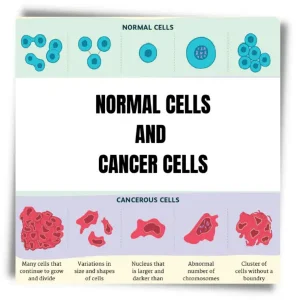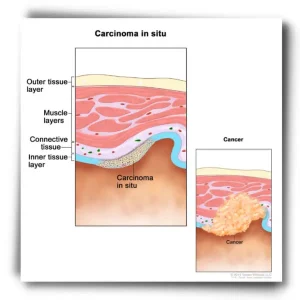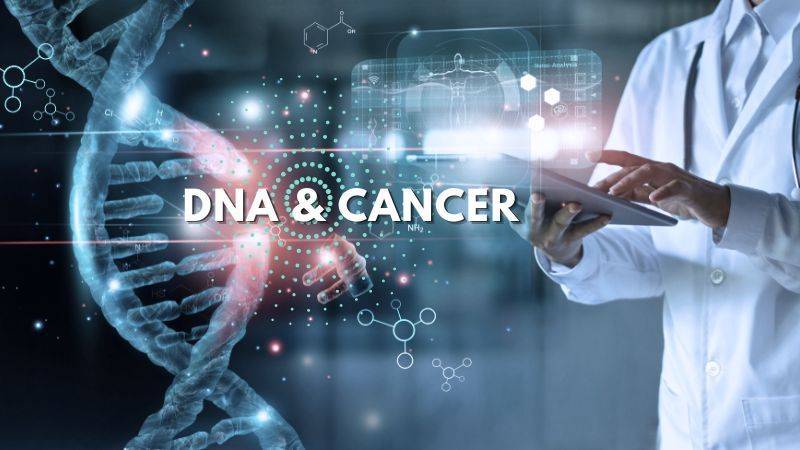“Cancer: Taking Lives One Cell at a Time”
Cancer is a complex disease that can affect any part of the body and can be caused by a variety of factors. In some cases, cancer can be fatal and can kill you.
In this article, we will discuss how cancer can kill you in different ways.
Cancer causes pain and suffering
Cancer causes pain and suffering physically, mentally, and financially.
Cancer can cause pain and suffering due to the tumors themselves, as the tumors can press on or invade nearby tissues or organs, causing pain.
Cancerous tumors can obstruct vital organs, causing severe pain and swelling. It can spread to other parts of the body, causing intense pain and discomfort.
Cancer can cause emotional pain and suffering. The stress of dealing with cancer can be overwhelming.
Cancer can also cause financial pain and suffering. The cost of cancer treatment can be very high.
Some of the most common pain and suffering caused by cancer include:
- Pain from cancer itself
- Pain from the treatments or procedures used to treat cancer
- Pain from the emotional effects of cancer
- Pain from the physical effects of cancer
Cancer causes organ failure
Cancer can cause organ failure in a variety of ways. It can cause direct destruction of an organ, such as when a tumor grows within a particular organ and impairs its function.
It can cause indirect destruction of an organ by spreading to other organs, like when cancer spreads to the liver and causes it to fail.
Additionally, It can cause organ failure by interfering with the body’s ability to produce the hormones and proteins required to maintain healthy organ function.
Cancer can cause organ failure by impairing blood flow to an organ, which can lead to decreased oxygen delivery and organ damage.
It can cause organ failure by damaging the immune system and allowing infections to gain a foothold and cause widespread damage.
Cancer cells can damage organs by growing into them and interfering with their normal function. Cancer cells can also release substances that damage nearby tissues.
Cancer can release toxins into the bloodstream that can damage organs. Organs that are most often affected by cancer include the lungs, liver, and kidneys.
Cancer affects the immune system
The cancer cells release a molecule called TNF alpha and this molecule causes the immune system to do something called “auto-immunity” which is when it starts attacking the body’s organs.
The reason why the immune system starts attacking the organs is that the cancer cells are telling the immune system that the organs are foreign and need to be eliminated.
Cancer cells destroy healthy cells in the body. This killing of healthy cells damages the body’s immune system. The cancer cells have lost the ability to recognize other cells as “self,” and they attack both healthy cells and cancer cells.
The immune system is a complex system of cells, tissues, and organs. It protects the body from infection and cancer cells. The immune system has two main types of defenses:
1. Innate
2. Adaptive
The innate immune system is the body’s first line of defense against infection. It is made up of cells that act as barriers, such as macrophages, natural killer cells, neutrophils, and mast cells. These cells can recognize and destroy invading organisms before they enter the body.
The adaptive immune system is the body’s second line of defense. It is made up of cells that recognize invaders after they are inside the body. These cells can produce antibodies that are specific to a particular invader.
Cancer cells attack and destroy healthy cells
Cancer cells are fast-growing, and they can propagate themselves by forming new, abnormal cells. This can lead to the invasion and destruction of nearby healthy cells by breaking down the cell membrane. They also produce chemicals that damage the cells’ DNA and cause them to die.
Cancer cells also secrete proteins that latch onto or “hook” onto the cell’s DNA. This causes the cell to break down and die. Cancer cells can also damage the DNA of healthy cells, which can lead to cancer.
Causes of Cancer and How They Lead to Death
Cancer is a devastating disease that affects millions of people around the world. Its complex condition has many causes and can lead to death in some cases.
At its core, cancer is caused by changes in the DNA of cells. These changes can be caused by a variety of factors, including environmental factors such as exposure to certain chemicals or radiation, or genetic factors such as inherited mutations. These changes cause the cells to grow and divide uncontrollably, forming tumors.
The exact cause of death from cancer depends on the type of cancer and how advanced it is. In some cases, cancer can spread to other parts of the body, such as the lungs or brain, and cause organ failure.
In other cases, cancer can cause the body to produce too many of certain hormones, leading to a condition called a hormone imbalance. This can cause a variety of symptoms, including fatigue, weight loss, and difficulty breathing.
Different Types of Cancer and How They Can Kill You
Cancer is a frightening diagnosis It is important to understand the different types of cancer and how they can kill you.
The most common type of cancer is Carcinoma,
It starts in the cells that line the organs and other structures of the body. It can spread to other parts of the body and can be fatal if not treated.
Other types of cancer include Sarcomas
It starts in the connective tissues such as muscle, fat, and bone; lymphomas, which are cancers of the lymphatic system; and leukemias, which are cancers of the blood and bone marrow.
Symptoms of Cancer and How They Can Lead to Death
The symptoms of cancer vary depending on the type and stage of the disease. Common symptoms include:
- Fatigue
- Weight loss
- Pain
- Changes in appetite
- Fever
- Night sweats
- Difficulty breathing
In some cases, cancer can cause lumps or masses to form in the body. When cancer is advanced, it can cause serious complications that can include organ failure, infection, and blood clots.
It is important to remember that cancer is not always a death sentence. With early detection and treatment, many people can manage their symptoms and live longer healthier lives.
Role of Genetics in Cancer and How It Can Affect Your Risk of Death
Many factors can contribute to a person’s risk of developing cancer, genetics can play a significant role. It is estimated that up to 10% of all cancers are caused by inherited genetic mutations.
Genetic mutations can be passed down from parent to child, and they can increase the risk of developing certain types of cancer. For example, mutations in the BRCA1 and BRCA2 genes are associated with an increased risk of breast and ovarian cancer.
Other genetic mutations can increase the risk of colorectal, pancreatic, and prostate cancer.
Knowing your family history and understanding your genetic risk can help you make informed decisions about your health.
For example, if you have a family history of cancer, you may want to talk to your doctor about genetic testing. This can help you determine if you have any genetic mutations that increase your risk of developing cancer.
If you do, your doctor can help you create a personalized plan to reduce your risk.
You are in control of your health. So take charge of your health today and make sure you are doing everything you can to reduce your risk of cancer.
Role of Diet and Exercise in Cancer Prevention and How It Can Help You Live Longer
A healthy diet is an important part of cancer prevention. Eating a balanced diet and exercising regularly can help you maintain a healthy weight, reduce your risk of developing certain types of cancer, and improve your overall health.
Eating a variety of fruits, vegetables, whole grains, and lean proteins can help you get the nutrients you need to stay healthy. Limiting your intake of processed and red meats, as well as sugary and fatty foods, can also help reduce your risk of developing cancer.
Additionally, eating foods that are high in antioxidants, such as berries, can help protect your cells from damage that can lead to cancer.
Exercise is also an important part of cancer prevention. Regular physical activity can help you maintain a healthy weight, reduce your risk of developing certain types of cancer, and improve your overall health.
Aim for at least 30 minutes of moderate-intensity physical activity, such as walking, jogging, or biking, five days a week. Strength training, such as lifting weights, can also help reduce your risk of developing certain types of cancer.
Making small changes to your lifestyle can have a big impact on your health and well-being. So, take the time to make healthy choices today and you’ll be rewarded with a longer, healthier life.
Role of Stress in Cancer and How It Can Affect Your Risk of Death
Stress is a normal part of life, but it can have a profound effect on our physical and mental health. The exact cause of any individual case is often difficult to pinpoint but recent research has shown that stress can play a role in the development and progression of cancer, and can even affect your risk of death.
Studies have found that people who experience high levels of stress are more likely to die from cancer than those who are less stressed. This is likely because stress can weaken the immune system, making it more difficult for the body to fight off cancer cells.
Regular exercise, healthy eating, and getting enough sleep can all help to reduce stress levels.
Additionally, taking time to relax and practice mindfulness can help to reduce stress and improve your overall well-being.
From the Cancer Warrior’s Diary
- In a video shared by ETimes, Sanjay Dutta says, “I had a backache and was treated with hot water bottles and painkillers until one day I couldn’t breathe. I was taken to the hospital but the thing was that the cancer news was not broken to me properly. My wife, my family, or my sisters, nobody was around me at that time. I was all alone and suddenly this guy comes and tells me ‘you have cancer. My first reaction was that, once you hear something like this, your whole life reflects on you.” –Bollywood Actor Sanjay Dutta









